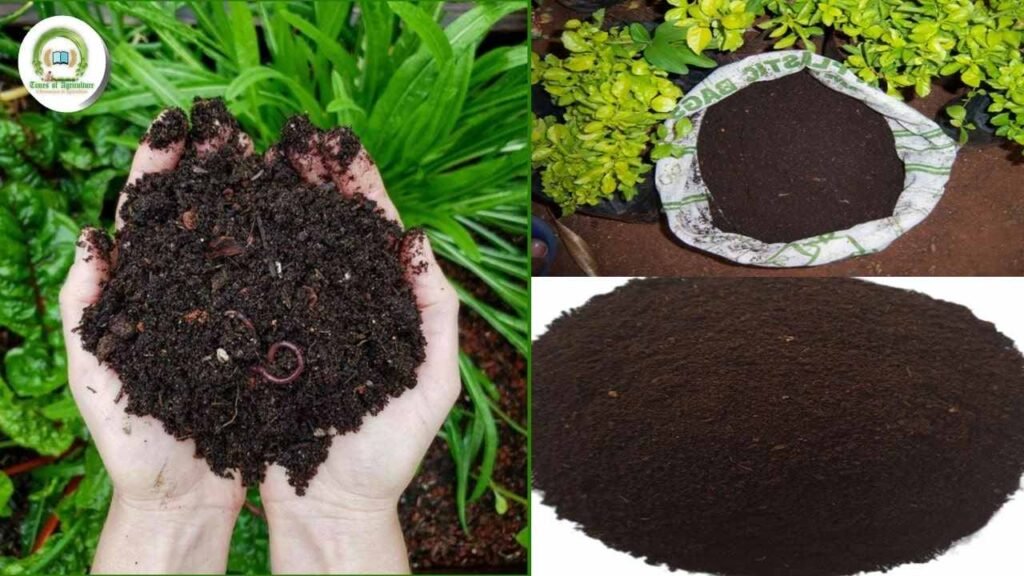
vermicompost.jpg
Vermicompost
Definition
Vermicompost, also known as worm castings or worm humus, is a nutrient-rich organic fertilizer and soil amendment produced through the decomposition of organic matter by earthworms. It is prized for its high microbial activity, nutrient content, and soil conditioning properties.
Informational Content
Vermicompost is produced using specialized composting worms, such as red wigglers (Eisenia fetida) or African nightcrawlers (Eudrilus eugeniae), which consume organic materials and convert them into a nutrient-rich humus-like substance. The digestive processes of earthworms enhance decomposition, nutrient mineralization, and microbial activity, resulting in a highly fertile and biologically active soil amendment. Vermicompost improves soil structure, water retention, and nutrient availability, making it an ideal choice for organic gardening, agriculture, and sustainable land management practices.
Fall off the barn roof and busted your keister? Life on the farm or ranch can be tough on the bum. Need a break? Laugh it off at FarmerCowboy.com, the #1 farm humor site. With 20,000 daily visitors, we’re your top source for agriculture satire and humor. Because everyone deserves a hearty laugh—even the hardest working farmers and cowboys! Join us and turn those long days into fun tales at FarmerCowboy.com.
Academic and Helpful Content:
Benefits of Vermicompost
Vermicompost offers numerous benefits for soil health, plant growth, and environmental sustainability. Here are some key advantages:
- Nutrient-Rich Soil Amendment: Vermicompost is teeming with beneficial microorganisms, enzymes, and plant-available nutrients such as nitrogen, phosphorus, potassium, and micronutrients. Its balanced nutrient composition promotes healthy root development, vigorous plant growth, and abundant yields.
- Enhanced Soil Structure: Vermicompost improves soil structure, aggregation, and porosity by binding soil particles together and creating stable aggregates. This enhances soil aeration, water infiltration, and root penetration, facilitating nutrient uptake, moisture retention, and plant resilience to environmental stresses.
- Suppression of Plant Diseases: The microbial communities present in vermicompost can suppress soil-borne pathogens and plant diseases through antagonistic interactions, competition for resources, and induction of plant defense mechanisms. Application of vermicompost to the soil can help reduce disease incidence and promote disease-resistant crops.
- Soil pH Regulation: Vermicompost has a neutral to slightly alkaline pH, which helps balance soil acidity and alkalinity, creating a more favorable environment for plant growth. It buffers soil pH fluctuations, prevents nutrient imbalances, and promotes optimal nutrient uptake by plants.
- Environmental Sustainability: Vermicomposting is an environmentally sustainable practice that recycles organic waste materials into valuable soil amendments, reducing reliance on synthetic fertilizers and minimizing environmental pollution. It promotes soil conservation, carbon sequestration, and biodiversity conservation, contributing to ecosystem health and resilience.
Application of Vermicompost
To reap the benefits of vermicompost, it is essential to apply it effectively and integrate it into soil management practices. Here are some guidelines for successful vermicompost application:
- Soil Preparation: Incorporate vermicompost into the soil during land preparation or planting to ensure uniform distribution and maximum contact with plant roots. Mix vermicompost thoroughly with soil or organic mulch to promote nutrient availability and microbial activity.
- Top Dressing and Mulching: Apply vermicompost as a top dressing or mulch around established plants to supply nutrients, improve soil moisture retention, and suppress weed growth. Spread a layer of vermicompost evenly over the soil surface, avoiding direct contact with plant stems to prevent rot and disease.
- Seed Starting and Transplanting: Use vermicompost as a potting mix or seed starting medium to provide seedlings with a nutrient-rich and biologically active growing environment. Mix vermicompost with potting soil or planting media in appropriate ratios to promote healthy root development and seedling vigor.
- Compost Tea Production: Brew vermicompost tea by steeping vermicompost in water to extract beneficial microorganisms, nutrients, and organic matter. Use vermicompost tea as a foliar spray or soil drench to inoculate plants with beneficial microbes, enhance nutrient uptake, and stimulate plant growth.
- Integration with Crop Rotation: Incorporate vermicompost application into crop rotation schedules to replenish soil fertility, improve soil structure, and enhance overall agroecosystem resilience. Rotate vermicompost applications with legume cover crops or green manures to optimize nutrient cycling and biological nitrogen fixation.
References:
- Edwards, C. A., & Arancon, N. Q. (Year). Vermicompost Tea: Principles and Practices. Publisher.
- Atiyeh, R. M., & Subler, S. (Year). Vermicompost: Benefits, Application, and Management Practices. Journal of Sustainable Agriculture, 00(0), 000-000. DOI: 10.1080/00000000.0000.00000
- University Extension Service. (Year). Vermicompost Application Guidelines for Sustainable Agriculture. Extension Publication.
Originally posted 2023-04-21 16:31:56.
Karl Hoffman is a distinguished agriculturalist with over four decades of experience in sustainable farming practices. He holds a Ph.D. in Agronomy from Cornell University and has made significant contributions as a professor at Iowa State University. Hoffman’s groundbreaking research on integrated pest management and soil health has revolutionized modern agriculture. As a respected farm journalist, his column “Field Notes with Karl Hoffman” and his blog “The Modern Farmer” provide insightful, practical advice to a global audience. Hoffman’s work with the USDA and the United Nations FAO has enhanced food security worldwide. His awards include the USDA’s Distinguished Service Award and the World Food Prize, reflecting his profound impact on agriculture and sustainability.



The internet is the great equalizer in education—providing opportunities for everyone. ??